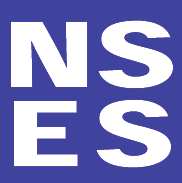exploring (passive involvement)
observe, describe, and record data
• Work quietly with little or no interaction
• Try different ways to solve a problem or
with others (only appropriate when
answer a question
exploring ideas or feelings)
• Acquire a common set of experiences so
• Stop with one solution
they can compare results and ideas
• Demand or seek closure
• Compare their ideas with those of others
Explain
• Explain concepts and ideas in their own
• Propose explanations from “thin
words
air” with no relationship to previous
• Base their explanations on evidence
experiences
acquired during previous investigations
• Bring up irrelevant experiences and
• Record their ideas and current
examples
understanding
• Accept explanations without
• Reflect on and perhaps revise their ideas
justification
• Express their ideas using appropriate
• Ignore or dismiss other plausible
scientific language
explanations
• Compare their ideas with what scientists
• Propose explanations without evidence
know and understand
to support their ideas
Elaborate
• Make conceptual connections between
• Ignore previous information or
new and former experiences
evidence
• Use what they have learned to explain a
• Draw conclusions from “thin air”
new object, event, organism, or idea
• Use terminology inappropriately and
• Use scientific terms and descriptions
without understanding
• Draw reasonable conclusions from
evidence and data
• Communicate their understanding to others
• Demonstrate what they understand about
the concept(s) and how well they can
implement a skill
Evaluate
• Compare their current thinking with that of
• Disregard evidence or previously
others and perhaps revise their ideas
accepted explanations in drawing
• Assess their own progress by comparing
conclusions
their current understanding with their prior
• Offer only yes-or-no answers or
knowledge
memorized definitions or explanations
• Ask new questions that take them deeper
as answers
into a concept or topic area
• Fail to express satisfactory explanations
in their own words
• Introduce new, irrelevant topics
12
Rare Diseases and Scientific Inquiry
• use and understand scientific terms and
supplement Sleep, Sleep Disorders, and Biological
descriptions accurately and in context,
Rhythms, developed by BSCS in 2003 (NIH and
• draw reasonable conclusions from evidence
BSCS, 2003). Sixty high school students and
and data,
one teacher participated. The students were
• add depth to their understandings of rare
randomly assigned to either the experimental
diseases and scientific inquiry, and
or the control group. In the experimental
• communicate their understandings to others.
group, the teacher used a version of the sleep
supplement that was closely aligned with the
Evaluate
theoretical underpinnings of the BSCS 5Es.
The Evaluate lesson is the final phase of the
For the control group, the teacher used a set
instructional model, but it only provides a
of lessons based on the science content of the
“snapshot” of what the students understand
sleep supplement but aligned with the most
and how far they have come. In reality,
commonplace instructional strategies found
the assessment of students’ conceptual
in U.S. science classrooms (as documented by
understanding and ability to use skills begins
Weiss et al., 2003). Both groups had the same
with the Engage lesson and continues through
master teacher.
each of the other phases. Combined with the
students’ written work and performance of
Students taught with the BSCS 5Es and
tasks throughout the supplement, however,
an inquiry-based approach demonstrated
the Evaluate lesson can serve as a summative
significantly higher achievement for a range of
assessment of what students know and can do.
important learning goals, especially when the
results were adjusted for variance in pretest
The Evaluate lesson (Lesson 5) gives students
scores. The results were also consistent across
a chance to
time (both immediately after instruction and
• demonstrate their understandings of rare
four weeks later). Improvements in student
diseases and scientific inquiry,
learning were particularly strong for measures
• share their current thinking with others,
of student reasoning and argumentation. The
• assess their own progress by comparing their
following chart (Table 7) highlights some of
current understandings with their initial
the study’s key findings. The results of the
ideas, and
experiment strongly support the effectiveness of
• ask questions that take them deeper into a
teaching with the BSCS 5Es.
concept.
Evidence also suggests that the BSCS 5Es
What’s the Evidence for the Effectiveness
are effective in changing students’ attitudes
of the BSCS 5E Instructional Model?
on important issues. In a research study
Support from educational research studies for
conducted during the field test for the NIH
teaching science as inquiry is growing (for
curriculum supplement The Science of Mental
example, Geier et al., 2008; Hickey et al., 1999;
Illness (NIH and BSCS, 2005), BSCS partnered
Lynch et al., 2005; and Minner et al., 2009).
with researchers at the University of Chicago
A 2007 study, published in the Journal of
and the National Institute of Mental Health.
Research in Science Teaching (Wilson et al.,
The study investigated whether a short-term
2010), is particularly relevant to the Rare
educational experience would change students’
Diseases and Scientific Inquiry supplement.
attitudes about mental illness. The results
showed that after completing the curriculum
In 2007, with funding from NIH, BSCS
supplement, students stigmatized mental illness
conducted a randomized, controlled trial
less than they had beforehand. The decrease in
to assess the effectiveness of the BSCS 5Es.
stigmatizing attitudes was statistically significant
The study used an adaptation of the NIH
(Corrigan et al., 2007; Watson et al., 2004).
Implementing the Supplement
13
Table 7. Differences in Performance of Students Receiving Inquiry-Based and Commonplace Instructional Approaches
Measure
Mean for Students
Mean for Students
Effect Size
Receiving
Receiving Inquiry-
Commonplace
Based Teaching
Teaching
Total test score pretest (out of 74)
31.11
29.23
Not applicable
Total test score posttest
42.87
47.12
0.47
Reasoning pretest (fraction of
0.04
0.03
Not applicable
responses at the highest level)
Reasoning posttest (fraction of
0.14
0.27
0.68
responses at the highest level)
Score for articulating a claim
1.58
1.84
0.58
(out of 3)
Score for using evidence in an
1.67
2.01
0.74
explanation (out of 3)
Score for using reasoning in an
1.57
1.89
0.59
explanation (out of 3)
Source: C.D. Wilson et al. 2010. The relative effects and equity of inquiry-based and commonplace science teaching on students’ knowledge, reasoning, and argumentation. Journal of Research in Science and Teaching, 47(3), 276–301.
Note: Effect size is a convenient way of quantifying the amount of difference between two treatments. This study used the standardized mean difference (the difference in the means divided by the standard deviation, also known as Cohen’s d). The posttest scores controlled for the variance in students’ pretest scores. The reasoning posttest scores controlled for variance in students’ reasoning pretest scores at the highest level.
How Does the Supplement Support
These strategies allow you to assess a variety
Ongoing Assessment?
of aspects of the learning process, such
Teachers will use this supplement in a variety of
as students’ prior knowledge and current
ways and at different points in their curriculum.
understandings, problem-solving and critical-
The most appropriate way to assess student
thinking skills, level of understanding of new
learning occurs informally at various points
information, communication skills, and ability
within the five lessons, rather than just once,
to synthesize ideas and apply understanding to
formally, at the end. We integrated assessment
a new situation.
components within the lessons. These
“embedded” assessment opportunities include
How Can Controversial Topics Be Handled
one or more of the following strategies:
in the Classroom?
• performance-based activities, such as
Teachers sometimes feel that the discussion of
developing graphs or participating in a
values is inappropriate in the science classroom
discussion of health effects or social policies;
or that it detracts from the learning of “real”
• oral presentations to the class, such as
science. The lessons in this supplement,
reporting experimental results; and
however, are based on the conviction that
• written assignments, such as answering
much can be gained by involving students in
questions or writing about demonstrations
analyzing issues of science, behavior, health,
14
Rare Diseases and Scientific Inquiry
and society. Society expects all citizens to
• Emphasize that everyone must be open to
participate in the democratic process, and
hearing and considering diverse views.
our educational system must give students
• Use unbiased questioning to help students
opportunities to learn to deal with contentious
critically examine all views presented.
issues with civility, objectivity, and fairness.
• Allow for the discussion of all feelings and
Likewise, students need to learn that science
opinions.
intersects with life in many ways.
• Avoid seeking consensus on all issues. The
multifaceted issues that students discuss
In this supplement, students discuss, interpret,
result in the presentation of divergent
and evaluate basic science and health issues,
views, and students should learn that this is
some in light of their values and ethics. As
acceptable.
students encounter issues they feel strongly
• Acknowledge all contributions in the same
about, some discussions might become
evenhanded manner. If a student seems to
controversial. The degree of controversy will
be saying something for its shock value,
depend on many factors, such as how similar
see whether other students recognize the
the students are with respect to socioeconomic
inappropriate comment, and then invite them
status, perspectives, value systems, and religious
to respond.
preferences. In addition, the language and
• Create a sense of freedom in the classroom.
attitude of the teacher factor into the flow of
Remind students, however, that freedom
ideas and the quality of exchange among the
implies the responsibility to exercise that
students.
freedom in ways that generate positive results
for all.
The following guidelines may help you facilitate
• Insist on a nonhostile environment in the
discussions that balance factual information
classroom. Remind students to respond to
with feelings:
ideas instead of to the individuals presenting
• Remain neutral. Neutrality may be the single,
those ideas.
most important characteristic of a successful
• Respect silence. Reflective discussions are
discussion facilitator.
often slow. If a teacher breaks the silence,
• Encourage students to discover as much
students may allow the teacher to dominate
information about the issue as possible.
the discussion.
• Keep the discussion relevant and moving
• At the end of the discussion, ask students
forward by questioning or posing appropriate
to summarize the points that they and their
problems or hypothetical situations.
classmates have made. Respect students
Encourage everyone to contribute, but do not
regardless of their opinions about any
force reluctant students into the discussion.
controversial issue.
Implementing the Supplement
15


Using the Student Lessons
The heart of Rare Diseases and Scientific Inquiry
• Materials: Lists all the materials other than
is a set of five classroom lessons that allow
photocopies that you need for each activity in
students to discover important concepts related
the lesson.
to rare diseases and scientific inquiry. To review
• Preparation: Outlines what you need to do
these concepts in detail, refer to the Science
to be ready to teach the activities.
Content and Conceptual Flow of the Lessons
chart (Table 3), found on page 6.
Procedure outlines the steps in each activity
and provides implementation hints and answers
Format of the Lessons
to discussion questions.
As you review the lessons, you will find that
each contains several major features.
The Lesson Organizer briefly summarizes the
lesson. It outlines procedural steps for each
At a Glance summarizes the lessons with these
activity and includes icons that notify you when
sections:
masters, transparencies, and the Web site are
• Overview: Provides a short summary of
used. You should use the lesson organizer only
student activities.
after you become familiar with the detailed
• Major Concepts: Lists the central ideas the
procedures for the activities. It can be a handy
lesson is designed to convey.
resource during lesson preparation as well as
• Objectives: Lists specific understandings
during classroom instruction.
or abilities students should have after
completing the lesson.
The Masters to be photocopied (student
• Teacher Background: Specifies which
worksheets and reference materials) are found at
portions of the background section,
the back of the supplement.
Information about Rare Diseases and
Scientific Inquiry, relate directly to the lesson.
Icons appear throughout the lessons. They
We do not intend for this reading material
alert you to teaching aids that can help you
to form the basis of lectures to students,
implement the activities and enrich student
nor do we intend it to be a direct resource
learning.
for students. Rather, it enhances your
Indicates steps that you can use as
understanding of the content so that you can
assessments, including informal
facilitate class discussions, answer student
indicators of student understanding,
questions, and provide additional examples.
and the final assessment at the end
of each lesson.
In Advance provides lists of items and
preparations needed for the activities:
Identifies the teaching strategies
• Web-Based Activities: Tells you which of
that address specific science
the lesson’s activities use the Rare Diseases
content standards as defined by the
and Scientific Inquiry Web site as the basis for
National Science Education
instruction.
Standards (NRC, 1996).
• Photocopies: Lists the paper copies and
overhead transparencies that you need to
make from the masters provided at the end of
the supplement.
Using the Student Lessons
17

Shows when to use the Web site
Identifies suggestions from field-
as part of the teaching strategy.
test teachers for teaching strategies,
A print-based alternative to each
classroom management, and
Web-based activity is provided for
supplement implementation.
classrooms that don’t have Internet
access.
Timeline for Teaching the Supplement
The timeline below (Table 8) outlines the optimal
Identifies a print-based alternative
plan for completing the five lessons. It assumes
to a Web-based activity.
you will teach the activities on consecutive days
of 50-minute class periods. If your class requires
more time for discussing issues raised in this
supplement or for completing activities, adjust
your timeline accordingly.
Table 8. Suggested Timeline
Timeline
Activity
3 weeks ahead
Reserve computers.
Check performance of Web site.
7 days ahead
Make photocopies and transparencies.
Gather materials.
School day 1
Lesson 1
Activity 1: What Is a Rare Disease?
School day 2
Lesson 2
Activity 1: Causes of Disease
Activity 2: Is a Rare Disease Present?
School day 3
Lesson 2
Activity 2: Is a Rare Disease Present?
Activity 3: How Rare Is Rare?
School day 4
Lesson 3
Activity 1: A Parent’s Dilemma
Activity 2: Connective Tissue
School day 5
Lesson 3
Activity 3: A Common Thread
School day 6
Lesson 4
Activity 1: An Unwelcome Diagnosis
School day 7
Lesson 4
Activity 1: An Unwelcome Diagnosis (conclude)
School day 8
Lesson 4
Activity 2: Clinical Trials
School day 9
Lesson 5
Activity 1: Creating an Informational Poster
School day 10
Lesson 5
Activity 2: Reflecting on Rare Diseases
18
Rare Diseases and Scientific Inquiry
Using the Web Site
The Web site for Rare Diseases and Scientific
and analysis that the Web site was designed to
Inquiry can help you organize your use of the
stimulate. Group members not involved directly
supplement, engage student interest in learning,
may become bored or lose interest.
and orchestrate and individualize instruction as
learning is taking place. Lessons 2, 3, 4, and 5
We recommend that you keep students in the
have activities on the Web site for classrooms
same collaborative groups for all the activities
with online access. To access the site, go to
in the lessons. This will allow each group to
http://science.education.nih.gov/supplements/
develop a shared experience with the Web site
rarediseases.
and with the ideas and issues the activities
present. A shared experience will also enhance
Under “Web Portion






